Ziigaat Crescent — warm, detailed, and easy to love
* Deep, controlled sub-bass with satisfying mid-bass punch
* Natural mids with accurate timbre and clear vocals
* Smooth, airy treble with no harshness
* Strong imaging, separation, and detail retrieval
* Keeps slam and detail even at low volumes
* Excellent, truly useful carry case
Cons:
* Stage is more wide than grand, not the largest sense of height
* Big case is great, but not pocket friendly
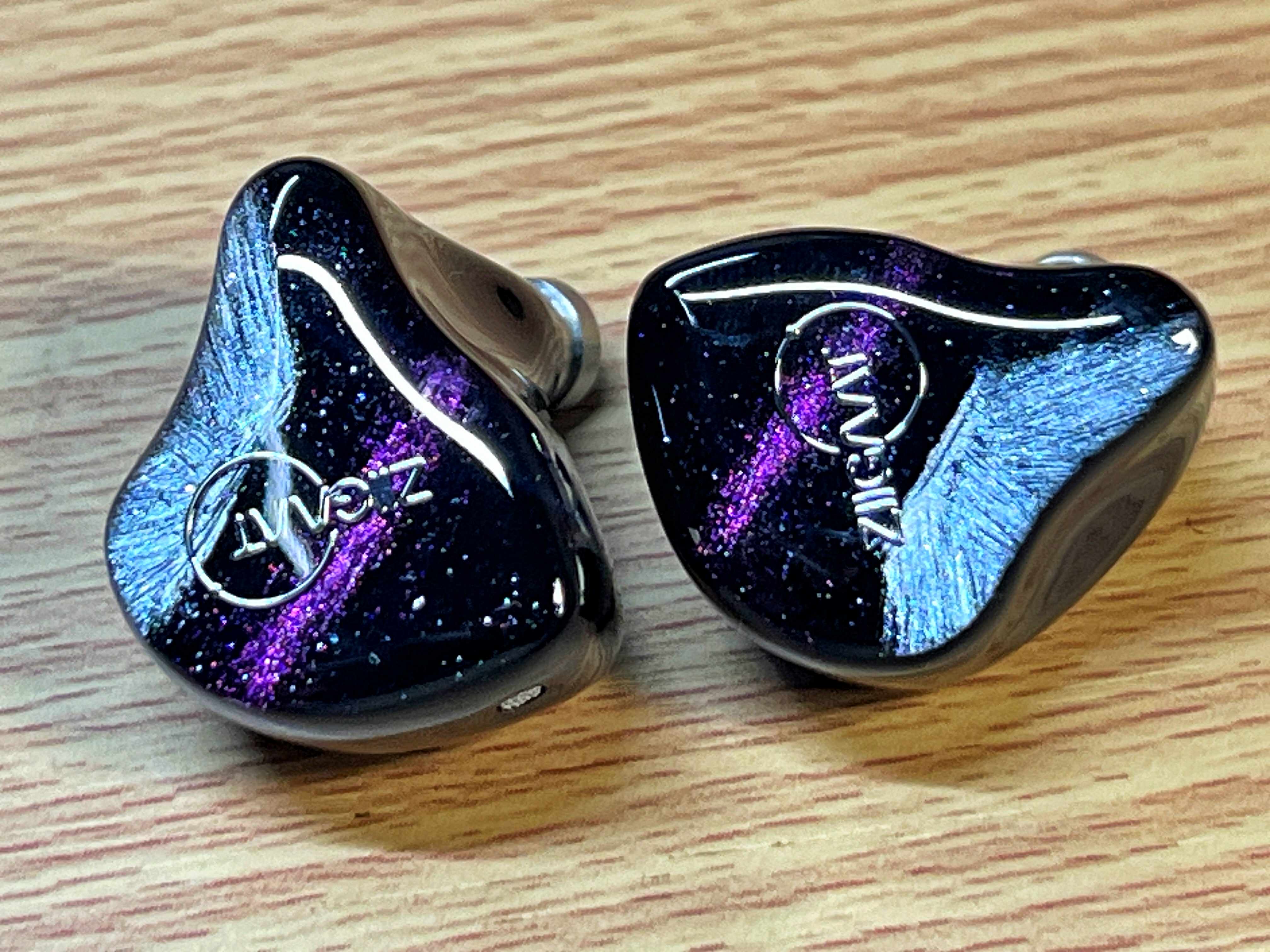
The Ziigaat Crescent is my second IEM from the brand, with the first being the Lush a set I really enjoyed for its neutral yet bassy fun tuning. Right away, the Crescent carries the same Ziigaat design language: a glossy black resin shell accented with gold markings. Just like the Lush, the fit is excellent and the isolation is impressive, which isn’t surprising since I tend to prefer resin shells over metal or alloy ones. Resin has that softer and warm feel in the ear and usually gives me a more secure seal for longer listening sessions.
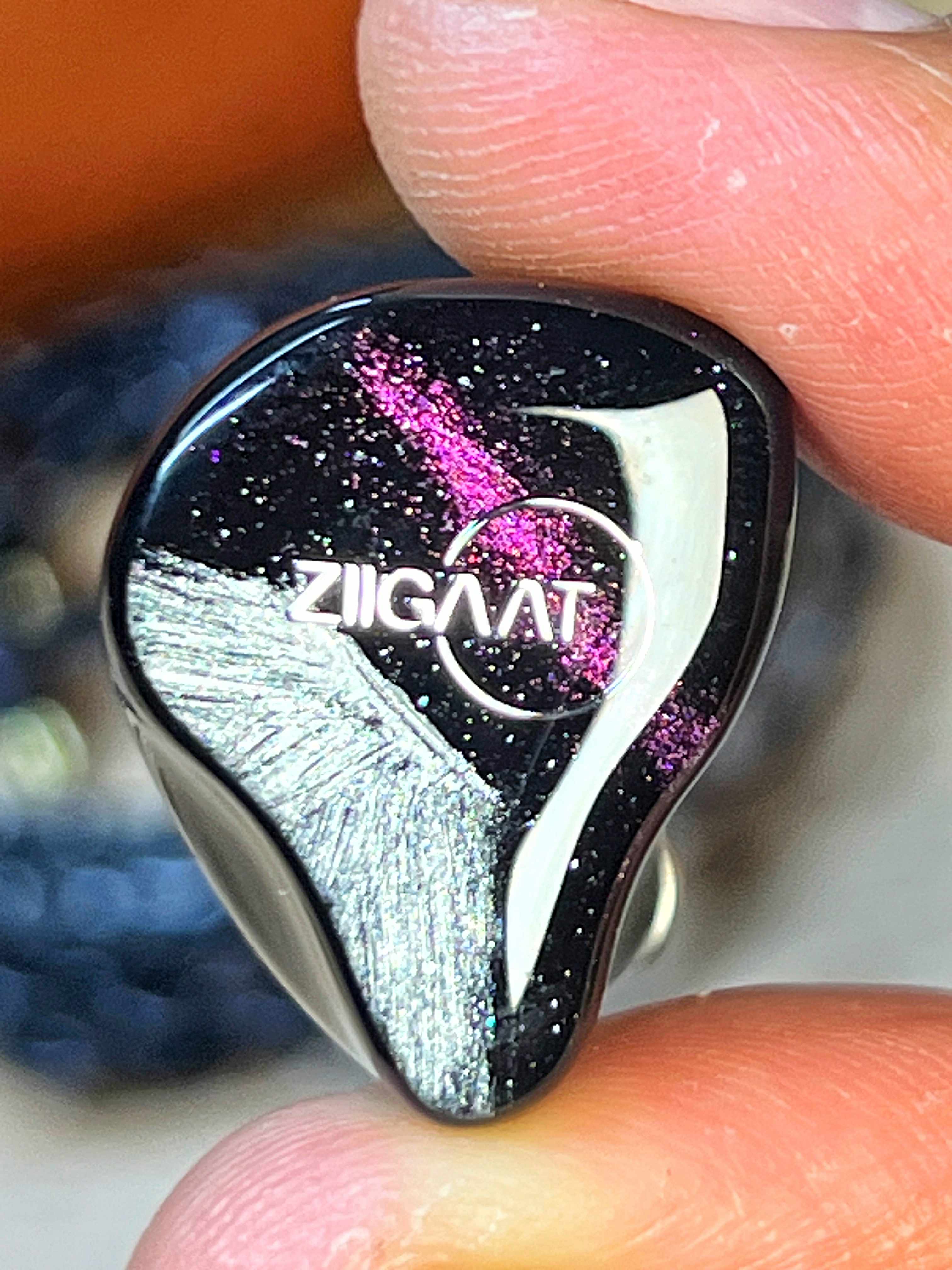
While the Lush went for a darker, Gotham-inspired faceplate design, the Crescent takes a more cosmic turn. The faceplate features a distant-galaxy swirl pattern that plays beautifully with light—shifting and catching reflections in a way that makes it look even better in person than in photos. It’s one of those designs that feels subtle from afar, but up close, you notice the fine details that make it stand out.
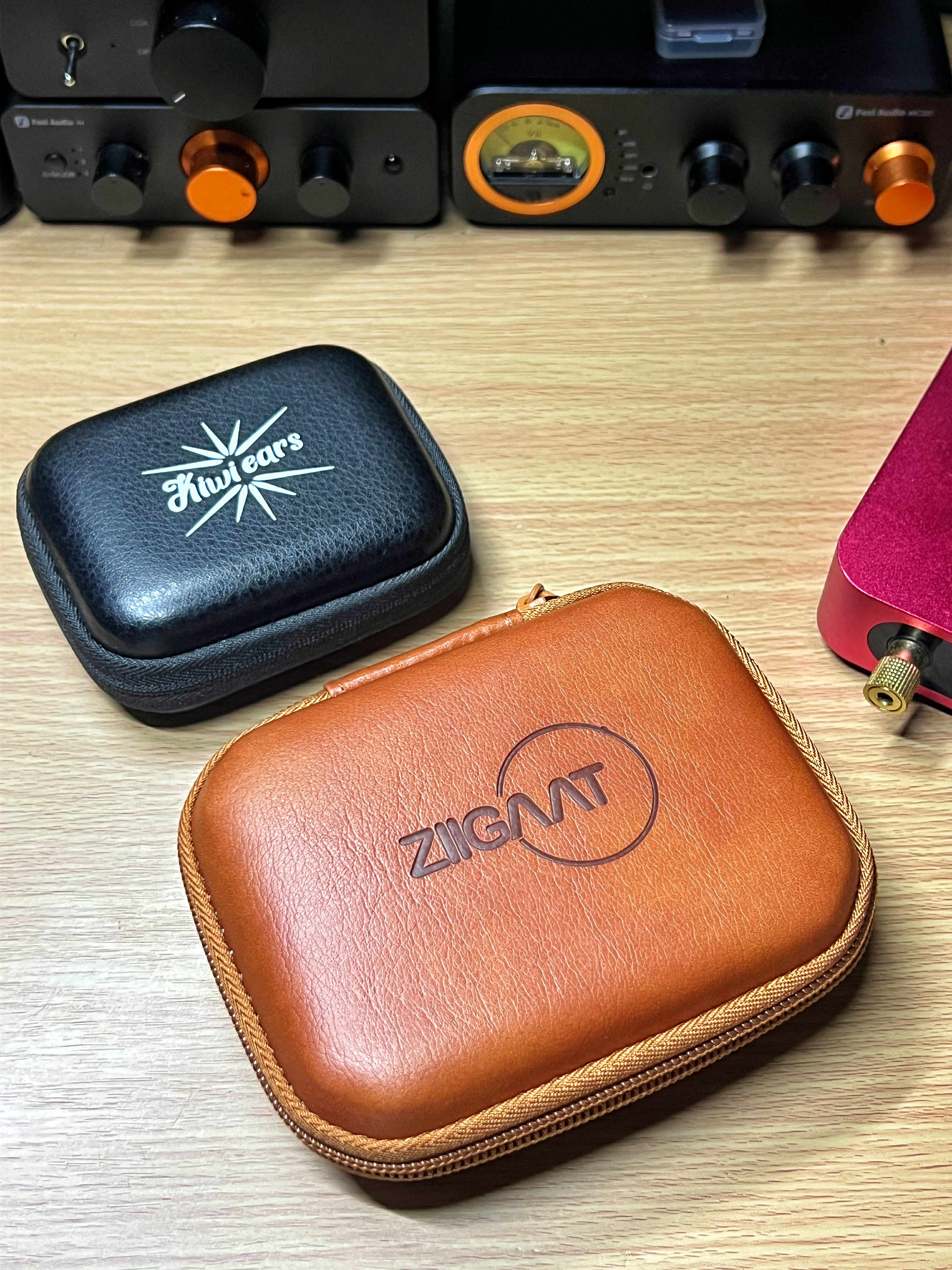
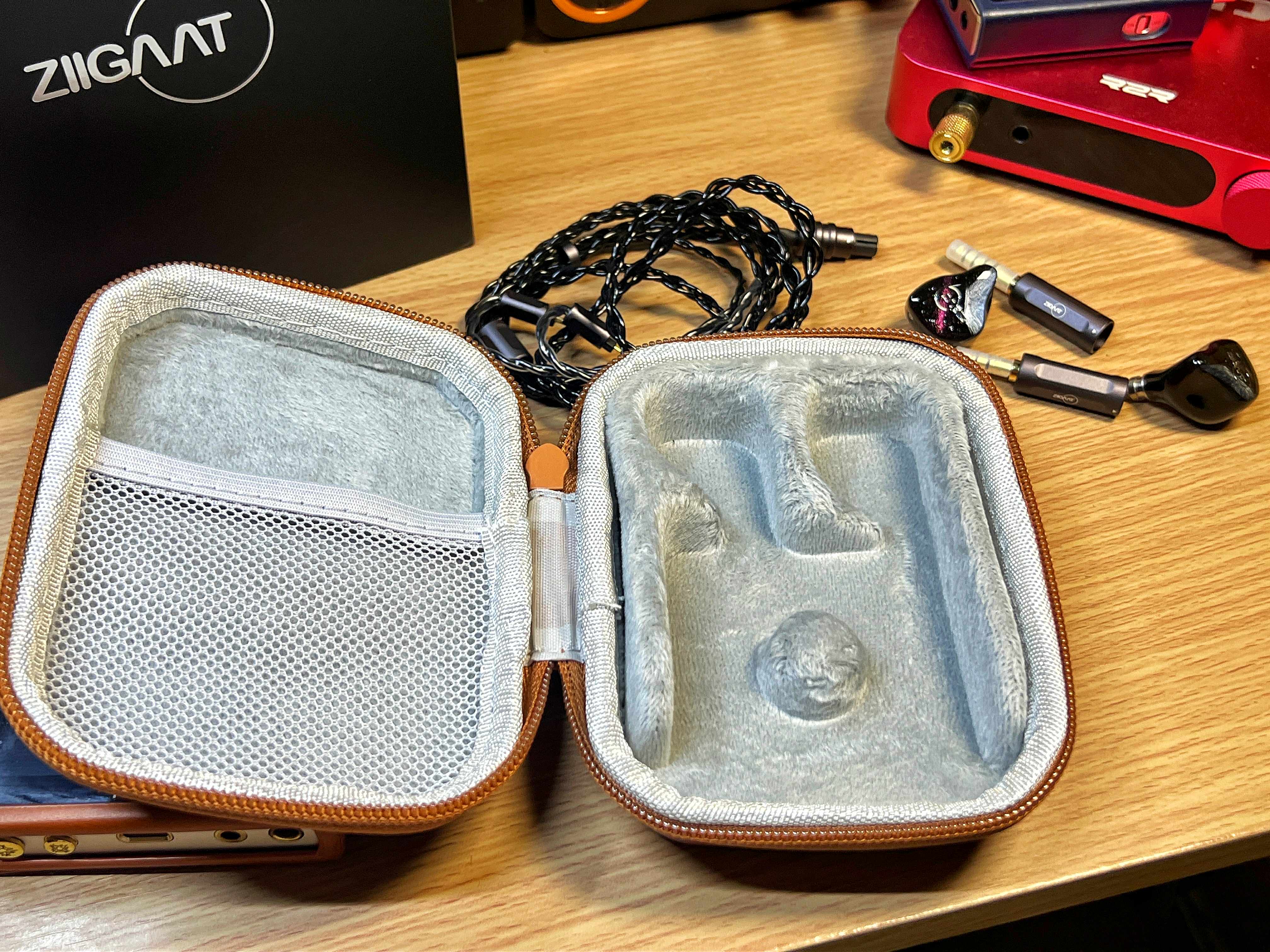
Then there’s the case. It’s unexpectedly large, definitely not your typical compact clamshell. You can fit the IEMs, a dongle, extra tips, and still have space to spare. The interior is well thought out, with molded compartments to keep the shells and cable in place. It’s not just about size—it’s practical, protective, and honestly, something I wish more brands would take notes on. Looking at you, Kiwi Ears.
Whats in the box? check out my quick unboxing video of the Ziigaat Crescent.
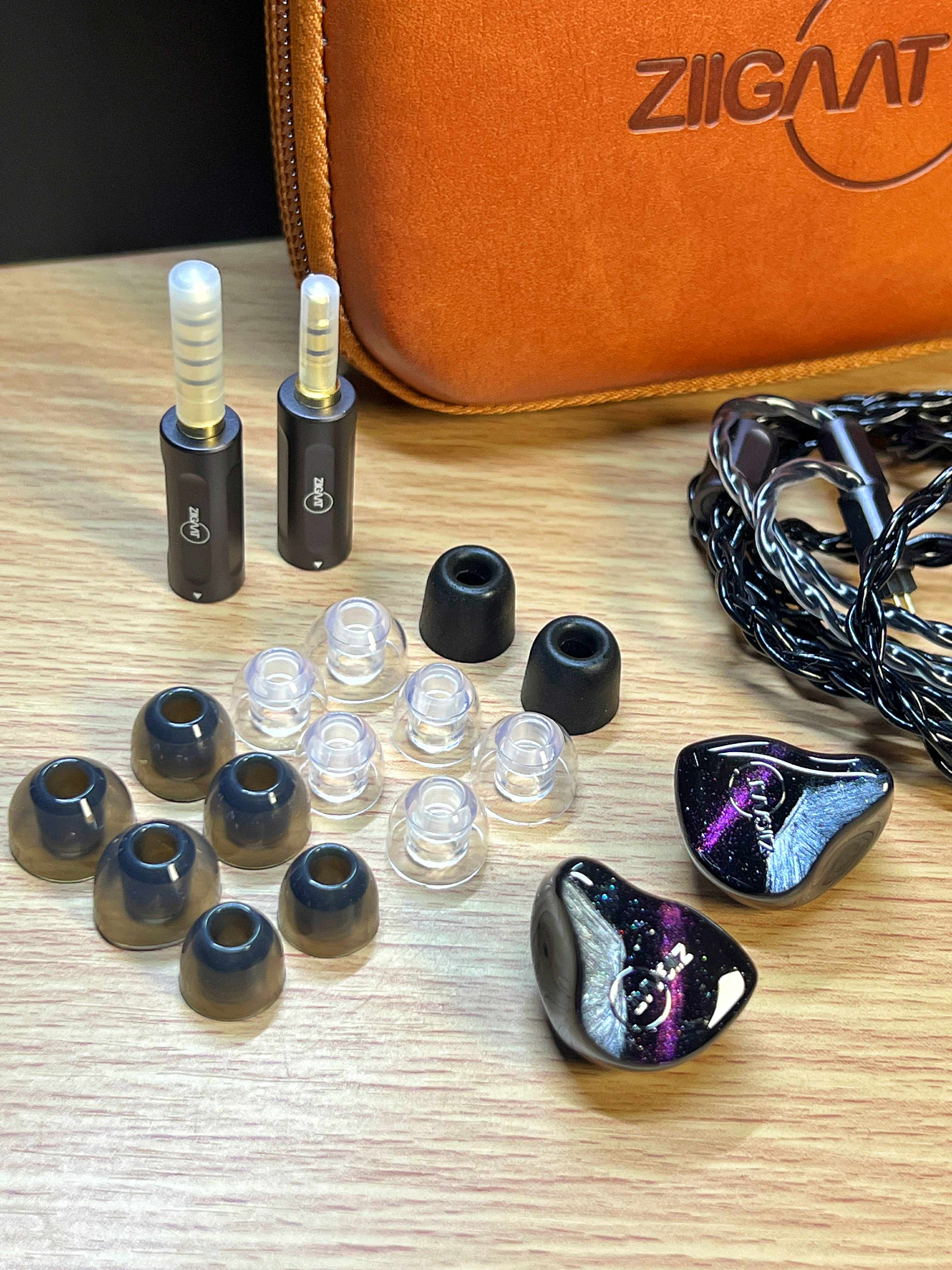
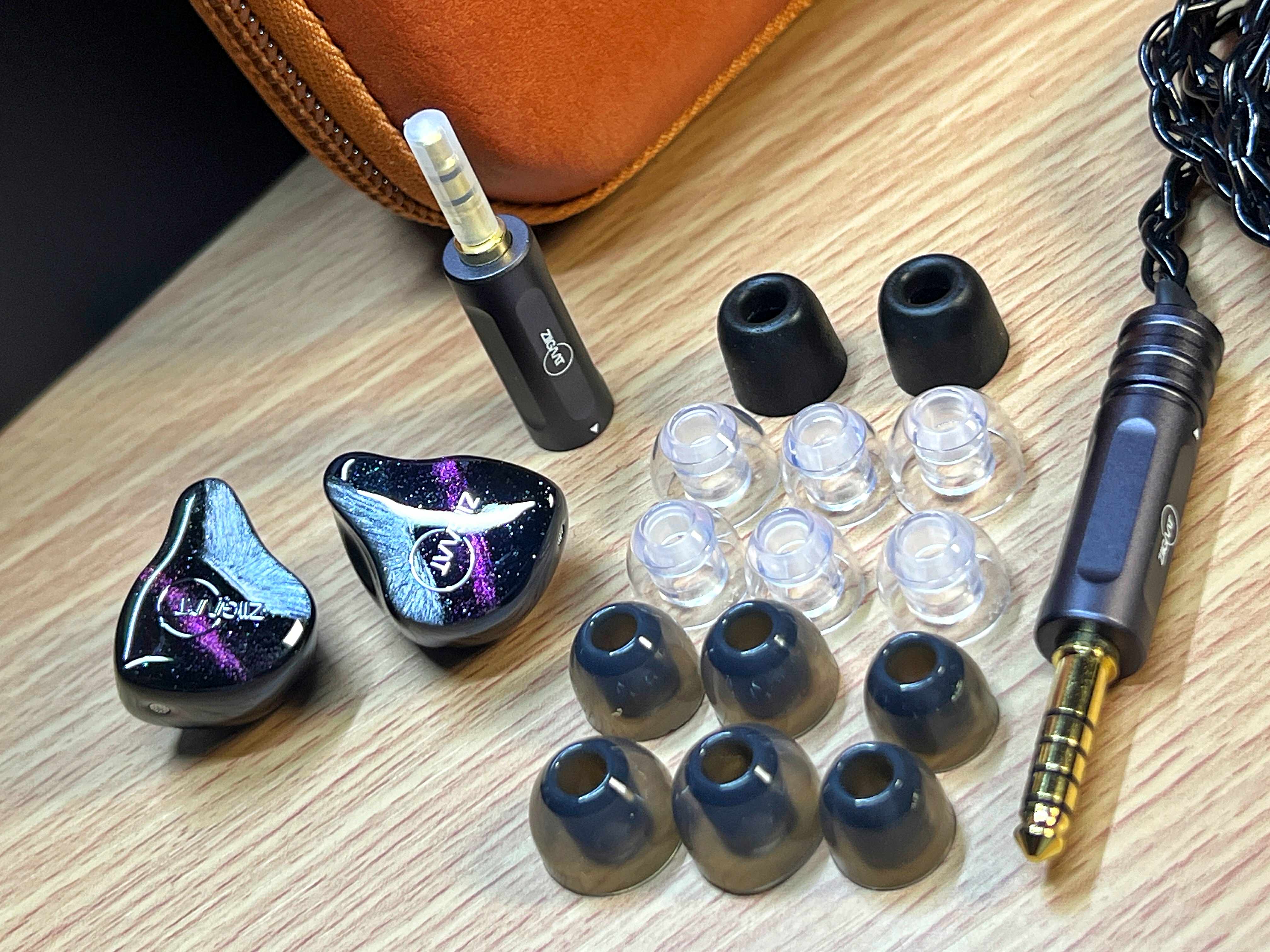
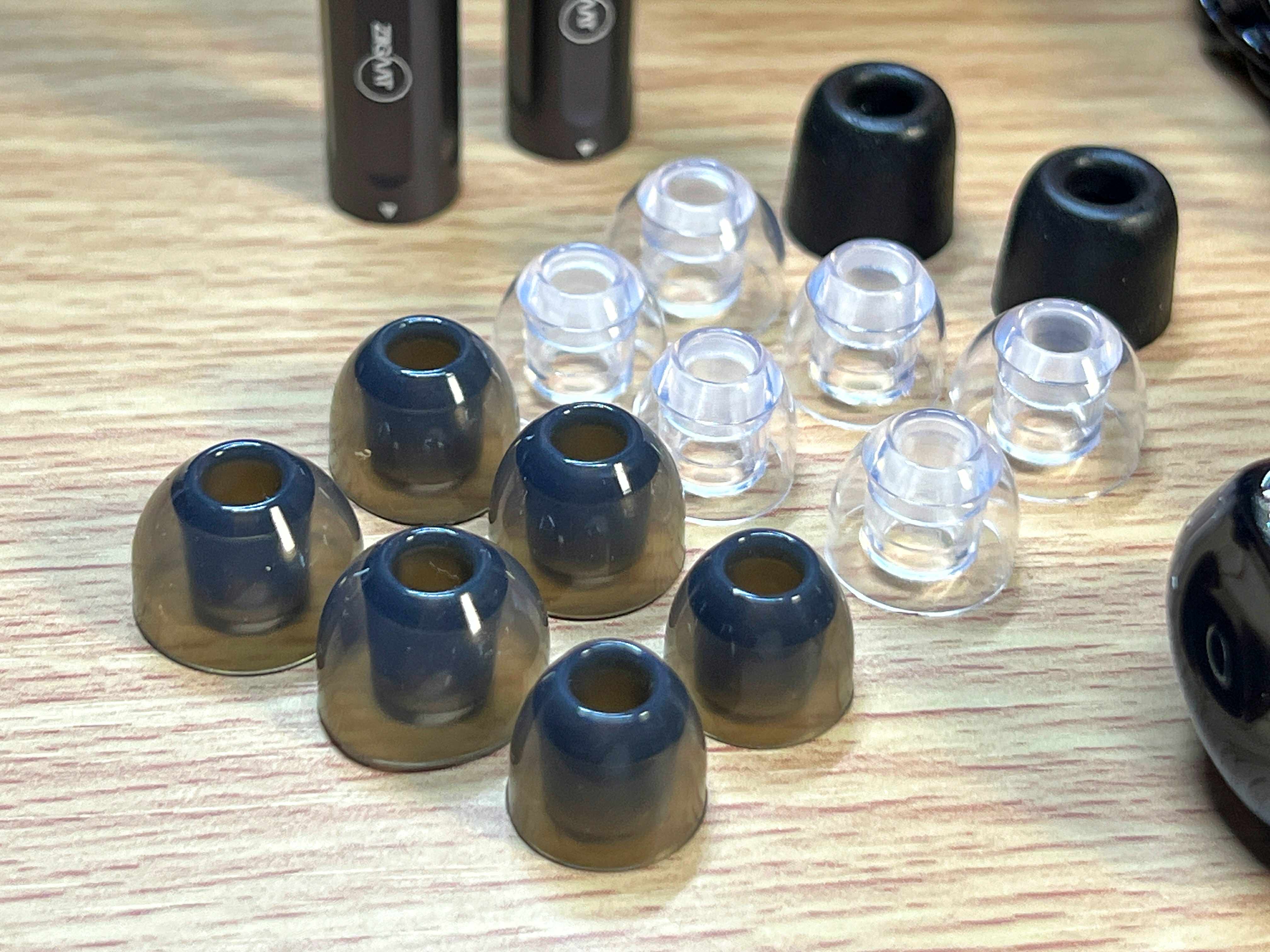
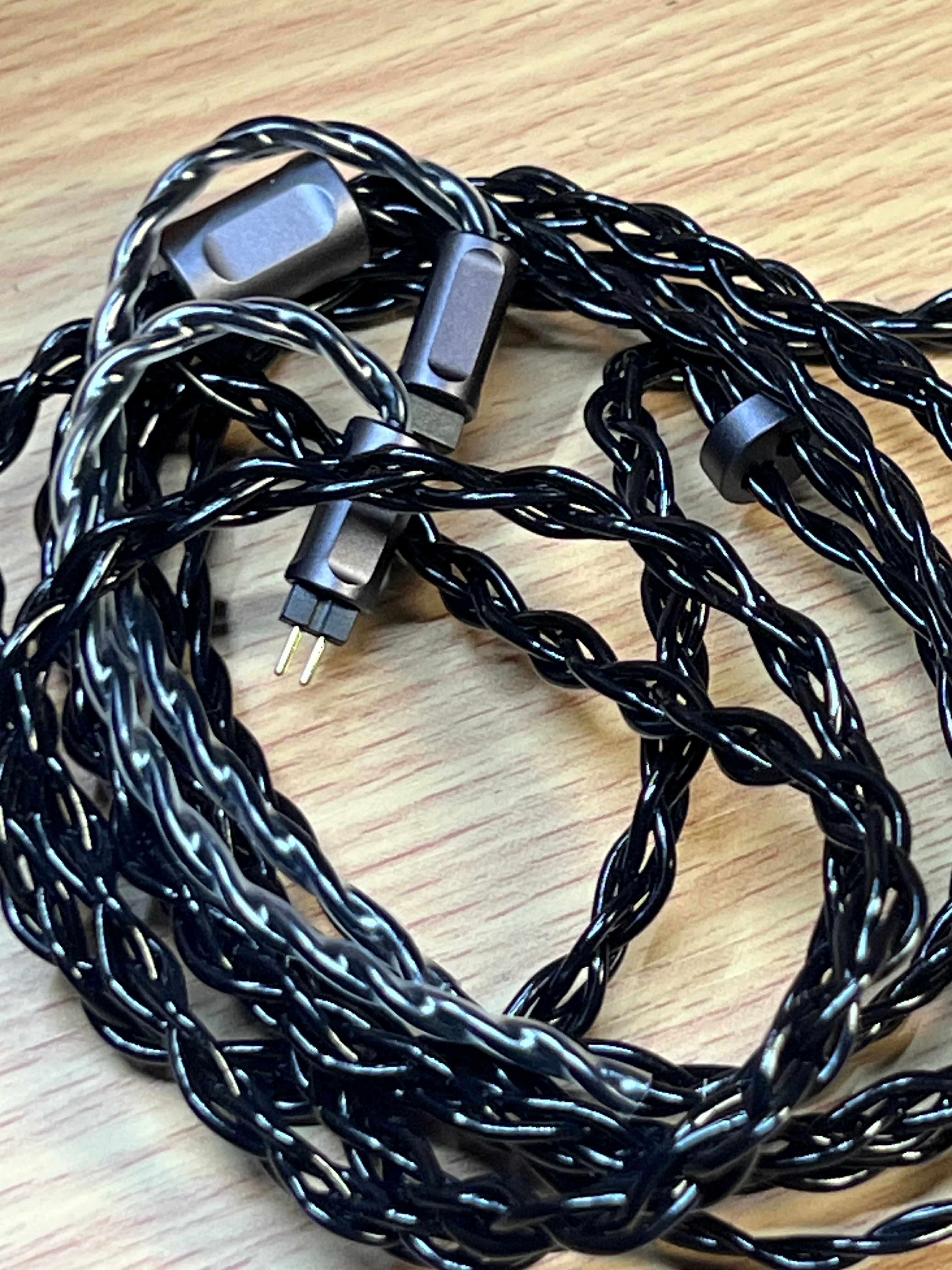
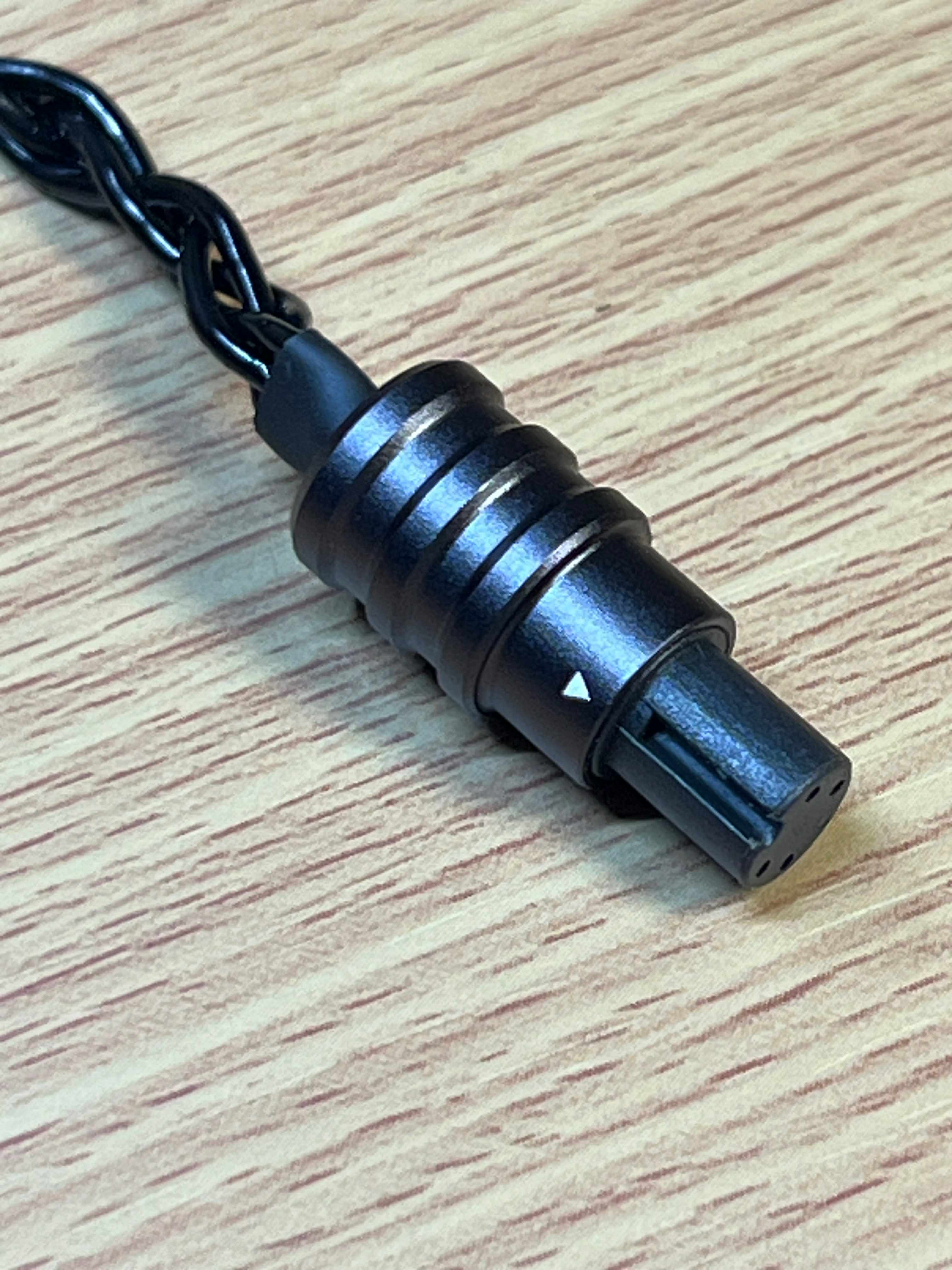
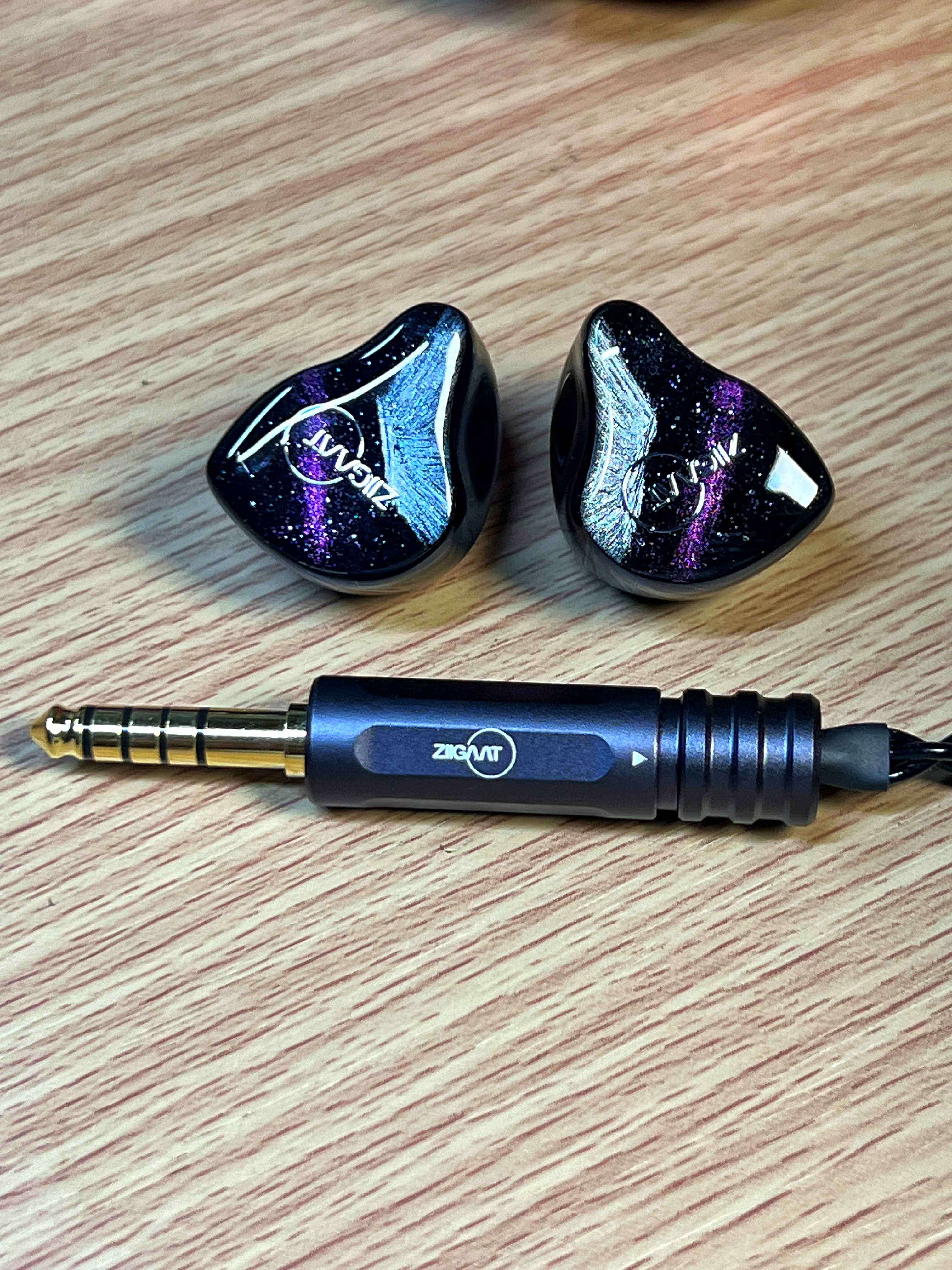
Driver setup:
1 × 10 mm LCP dynamic driver for sub-bass extension and control
1 × 10 mm PET dynamic driver for mid-bass warmth
1 × Knowles 30262-163 composite dual BA for upper mids and clarity
1 × Knowles 33518 dual BA tweeter for extended highs
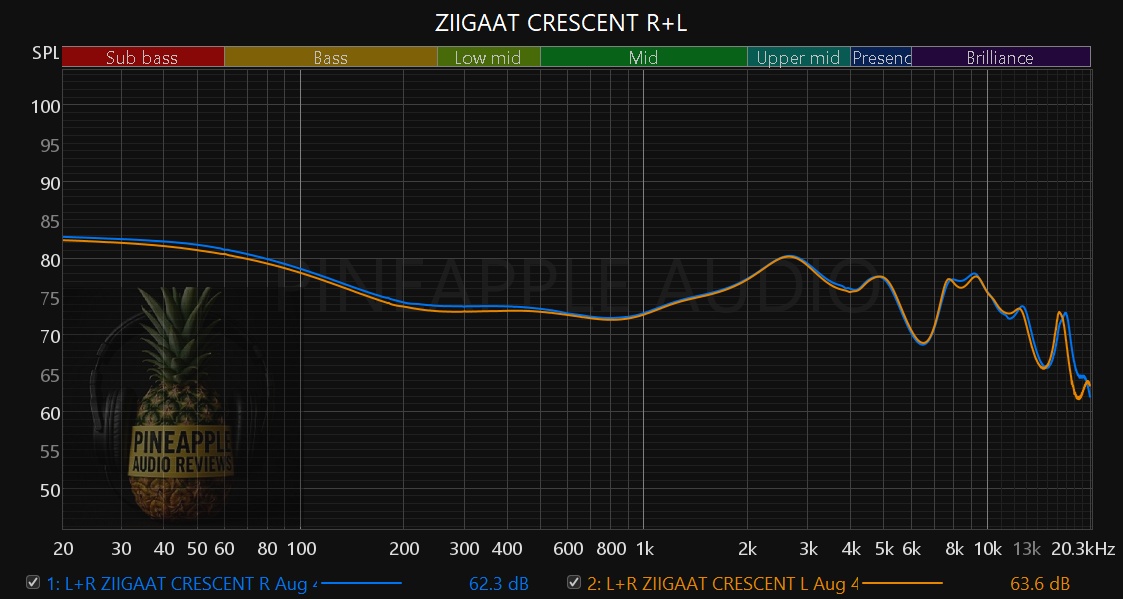
Tuning Overview
The Crescent leans toward a musical, easy-to-enjoy presentation, but it’s not soft or dull. There’s a tasteful lift in the lows, enough to give bass notes real presence and slam without bleeding into the mids. The midrange itself is clean, open, and tonally natural, making vocals and instruments sound convincing and well-textured. Treble is refined and well-extended, adding air and openness without tipping into harshness or sibilance.
It’s not a cold, clinical set, but it still carries the kind of technical chops you’d expect from something more analytical. Layering is tight, imaging is precise, and transients have good definition, so you get detail retrieval without sacrificing the smooth, musical flow. It strikes a nice balance engaging enough for casual listening, but with enough resolution to reward critical sessions.
Bass
The Crescent’s low end is one of its most addictive traits. The sub-bass digs deep but it’s not a loose, one-note rumble. It’s controlled, with a texture you can almost feel, like the vibration of a bass amp cabinet in a small club. When a track calls for it, the Crescent lets that sub-bass bloom and fill the space, but the moment it’s done, it snaps back with precision so it never bleeds into the mids.
The mid-bass has just the right amount of punch to give drums a satisfying thump and bass guitars real body without smothering the rest of the mix. It’s not overcooked or sluggish—there’s a nice speed to it that keeps things tight and rhythmic. Kicks land with weight, basslines have definition, and electronic drops hit with enough authority to get your head nodding without shaking your fillings loose.
I tested it with some Ibiza mixes and Café del Mar chillout tracks, and the Crescent just locked into the groove effortlessly. The bass breathes—it doesn’t just hit and disappear. It swells and recedes naturally, giving the music a sense of flow. That’s probably why it works so well for both the laid-back warmth of downtempo and the high-energy punch of club tracks. It’s engaging without being fatiguing, and it’s the kind of tuning that makes you want to keep listening just to see what it does next.
Midrange
The Crescent’s mids have this inviting, organic quality that’s hard to fake. They sit in that sweet spot where vocals sound full and present without feeling like they’re shouting at you. Male vocals carry a nice chesty weight, giving singers like Leonard Cohen or Gregory Porter that grounded, resonant presence they deserve. Female vocals, on the other hand, come through open and expressive, airy when they need to be, but never thin or brittle.
Instruments keep their natural tone, which is huge for me. Acoustic guitars sound like wood and strings, not plastic and wire. Pianos carry that gentle percussive attack followed by a warm, blooming sustain. Even horns have a brassy bite without turning harsh. There’s enough resolution here to pick out subtle things like the breath before a vocal line or the slide of fingers on guitar strings but the Crescent doesn’t shove those details in your face. It just presents them naturally, like they’re part of the music, not an analytical checklist.
It’s also worth noting how cleanly the mids transition from the bass. That warmth from the low end flows upward, giving the mids body and weight, but it never gets muddy. This is what makes the Crescent so versatile you can go from lush ballads to busy rock mixes and it still feels composed and coherent.
Treble
This is where the Crescent quietly flexes. The upper mids and treble have just the right lift to add sparkle and air without crossing into sharp or fatiguing territory. Cymbals shimmer with a realistic decay, not that brittle “tin can” effect some IEMs give you. Strings have just enough bite to cut through a mix, but they never screech.
The treble tuning is smooth and controlled, yet it still manages to keep things lively. There’s a touch of crispness that adds definition to percussion and articulation to vocals, helping consonants sound clean without going sibilant. High-frequency instruments like chimes, bells, or high synth pads have clarity and separation, and they occupy their own space without crowding the stage.
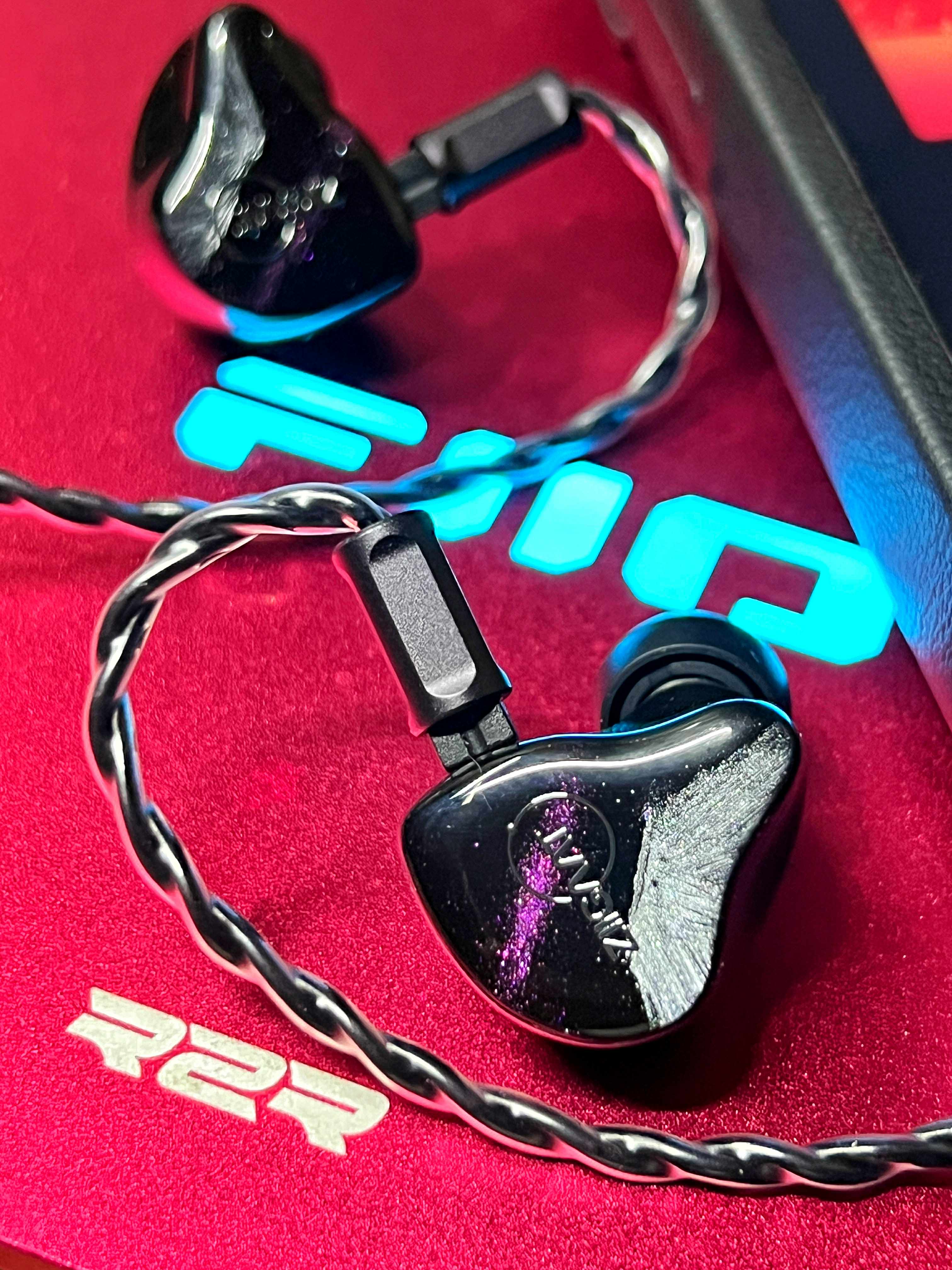
Technical Performance
Imaging is precise, making it easy to pinpoint where each instrument sits, even when the mix gets dense. Whether it’s a jazz trio or a 20-piece orchestral recording, placement stays stable and believable. Separation is equally strong—elements don’t smear into each other, and you can follow individual layers without effort.
Detail retrieval is impressive, but it’s done tastefully. It doesn’t shove every micro detail in your face like some overly analytical sets; instead, it reveals them naturally. You’ll catch things like the reverb tail on a snare hit or the subtle texture of a bowed string, but it never distracts from the music itself.
Soundstage leans more on width than height, with a stable and centered image. There’s a good sense of depth too, enough to layer instruments front-to-back in a way that feels coherent. It’s not a giant, airy “concert hall” type of stage, but it’s spacious, organized, and immersive enough to keep you engaged for hours.
Dynamics are another strong point. Macro hits—big drum strikes, sudden drops—land with satisfying punch, while micro dynamics, like the gentle swell of a vocal phrase, come through with nuance. Transients are quick and clean, especially in the low end, thanks to that tight sub-bass control. Fast bass passages stay articulate, and the overall sense of speed helps keep complex tracks from sounding congested.
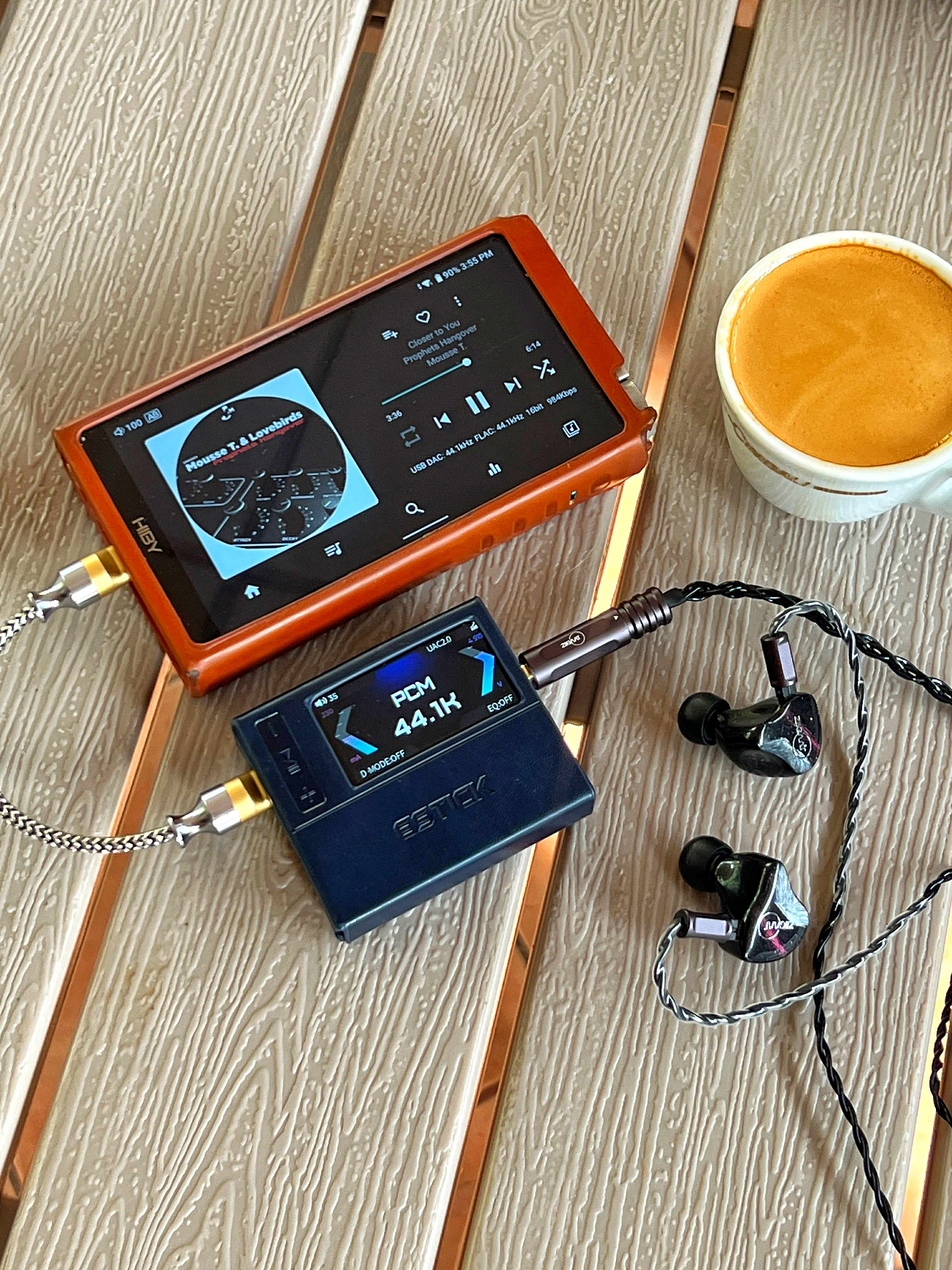
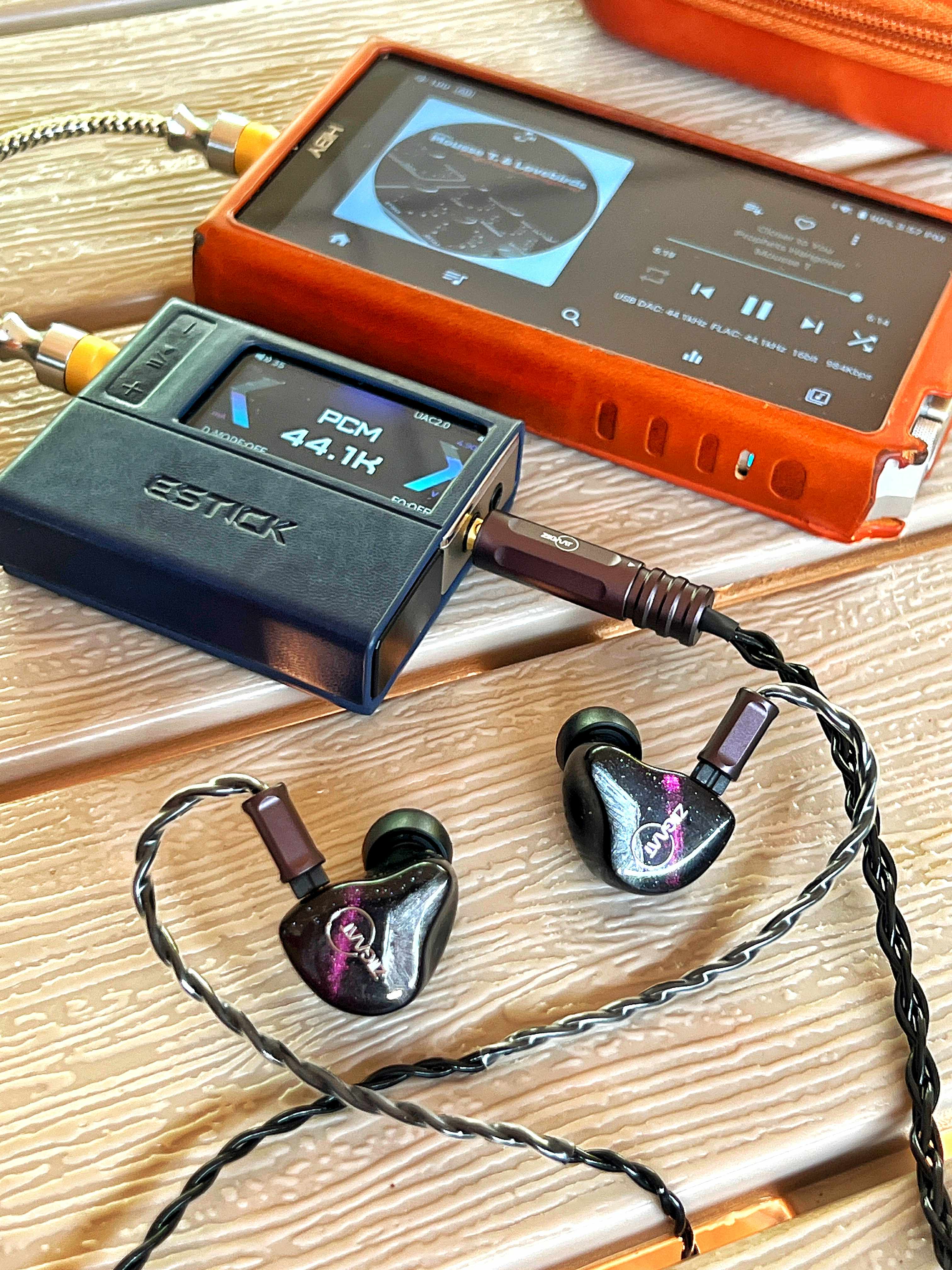
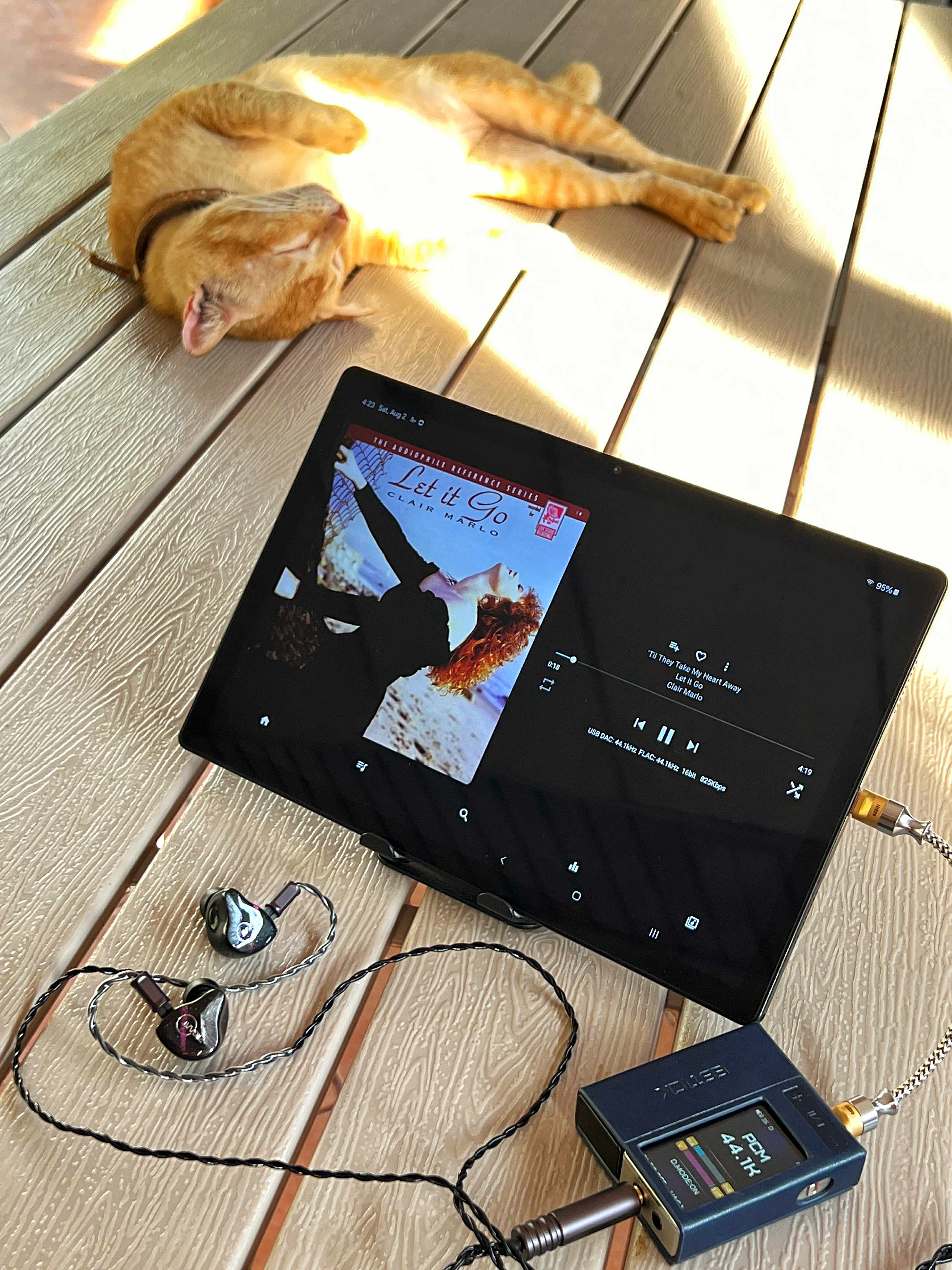
Source Pairing & Drivability
The Crescent is easy to drive and scales well with better gear. You don’t have to push the volume to get it to come alive, which is a big plus for late-night or long listening sessions. Even at low volumes, you still get bass slam, micro detail, and that dynamic energy—it doesn’t lose its soul when you turn it down.
Pair it with something like the FiiO QX13 and the synergy is spot-on. The QX13 adds fine detail and a touch of natural warmth that’s rare for an ESS-based DAC. There’s none of that “Sabre glare” or glassy treble edge; instead, you get smooth, extended highs and well-controlled bass. It’s a pairing that brings out the Crescent’s best qualities: deep, textured low end, lush and realistic mids, and treble that’s airy but never harsh. The result is a sound that’s both technically capable and genuinely musical, a balance that’s harder to nail than most people think.
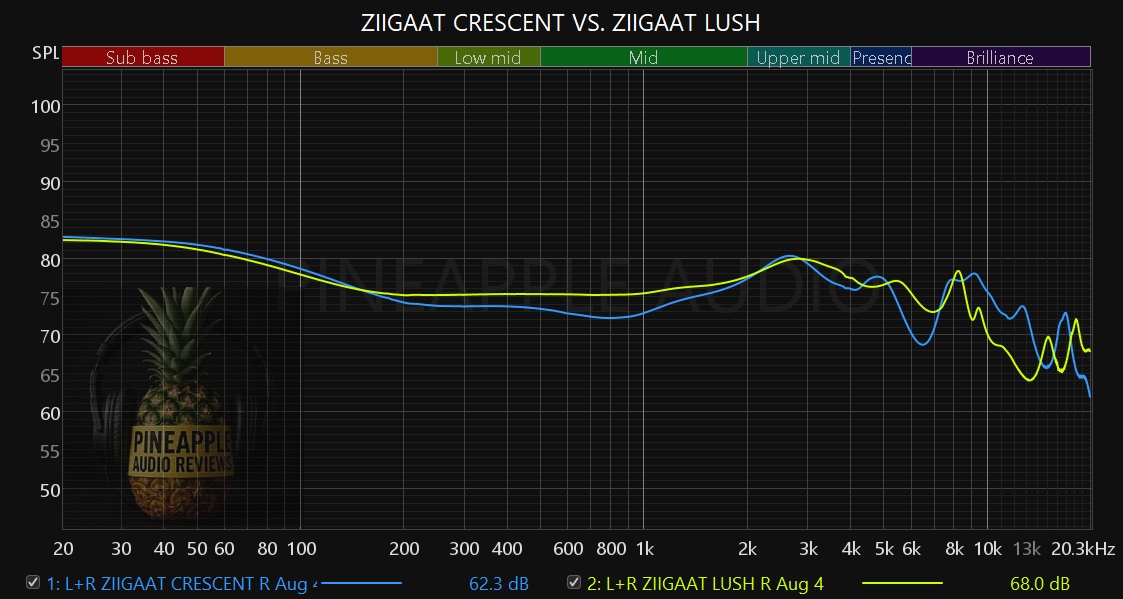
Comparison – Against “Lush”
Putting the Crescent side-by-side with the Lush really shows how much more alive the Crescent feels. The Lush isn’t a bad set at all, but when you switch over, it can come across as a bit flat and reserved. The Crescent just has more drive and energy, it hits harder in the bass, separates instruments more cleanly, and has a treble that’s livelier and more engaging without losing control.
Bass slam is the first thing you notice. On the Crescent, kicks have more weight, basslines are more defined, and the sub-bass reach feels deeper and more textured. The Lush, by comparison, feels polite still present, but less impactful and not as tight.
Separation is another clear win for the Crescent. In busier tracks, it keeps individual elements distinct, so you can follow the bass groove without it getting tangled up with the mids. The Lush tends to smooth things together more, which can make the presentation feel softer but also less precise.
Treble is where the Crescent really pulls ahead. It’s got sparkle and air that make cymbals shimmer naturally and high notes breathe. The Lush is smoother up top, which some might prefer for super-long sessions, but it can also make the sound feel a bit closed-in. The Crescent manages to keep that natural tone while giving the upper end more life, which in turn makes the whole presentation feel more open and engaging.
In short, the Lush is laid-back and pleasant, but the Crescent has that extra bit of punch, clarity, and top-end sparkle that makes music feel more vivid and immediate.
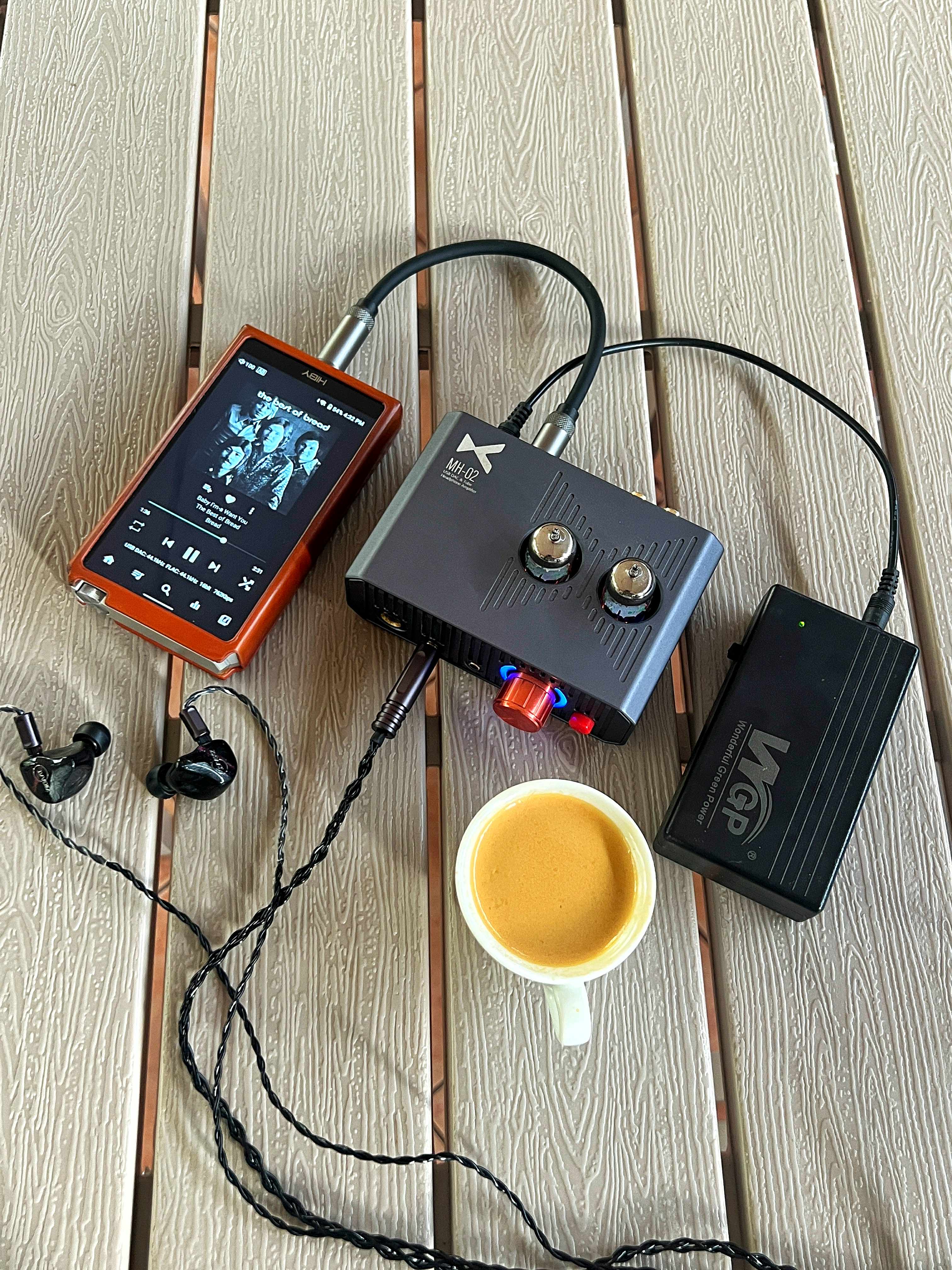
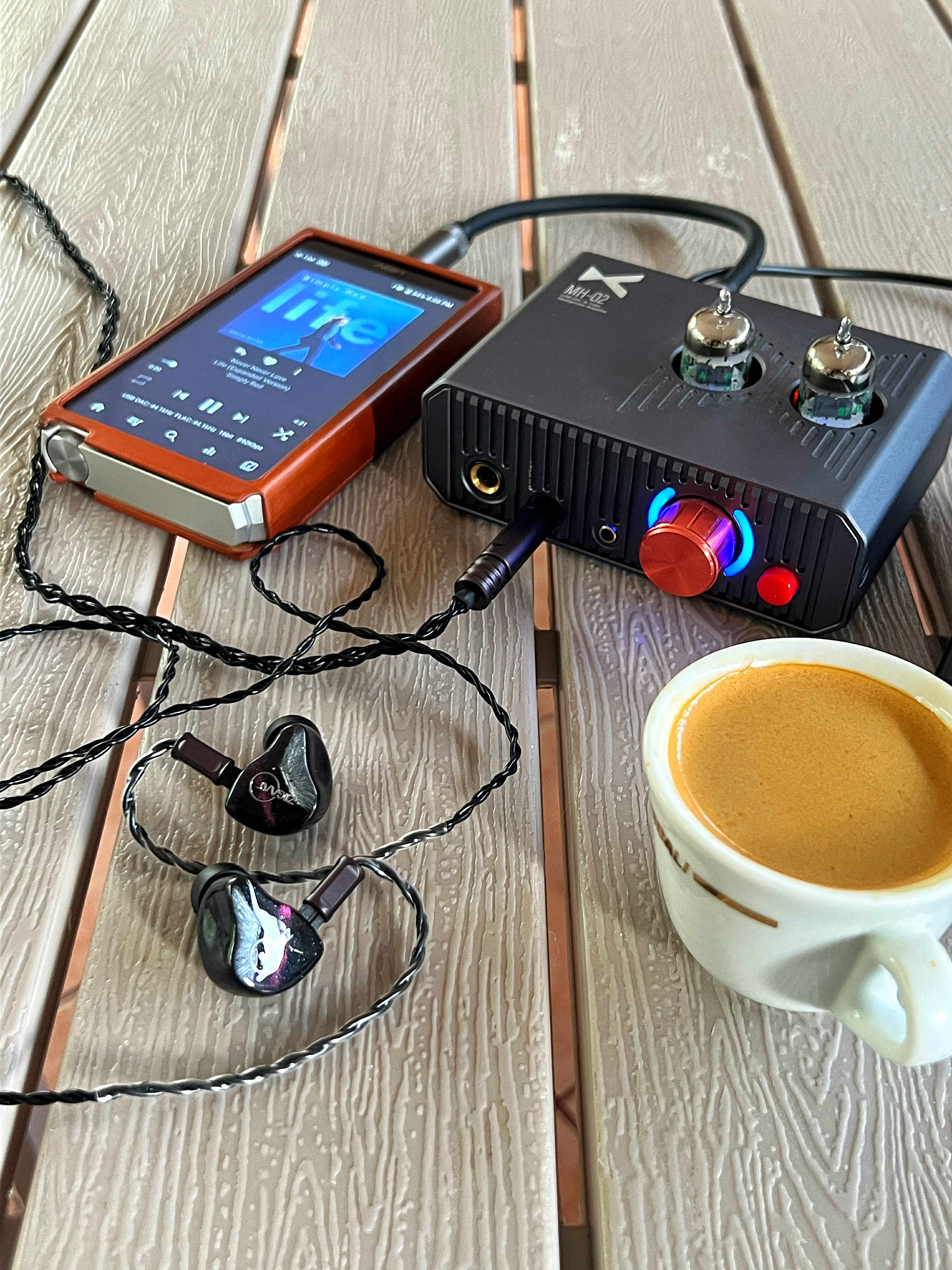
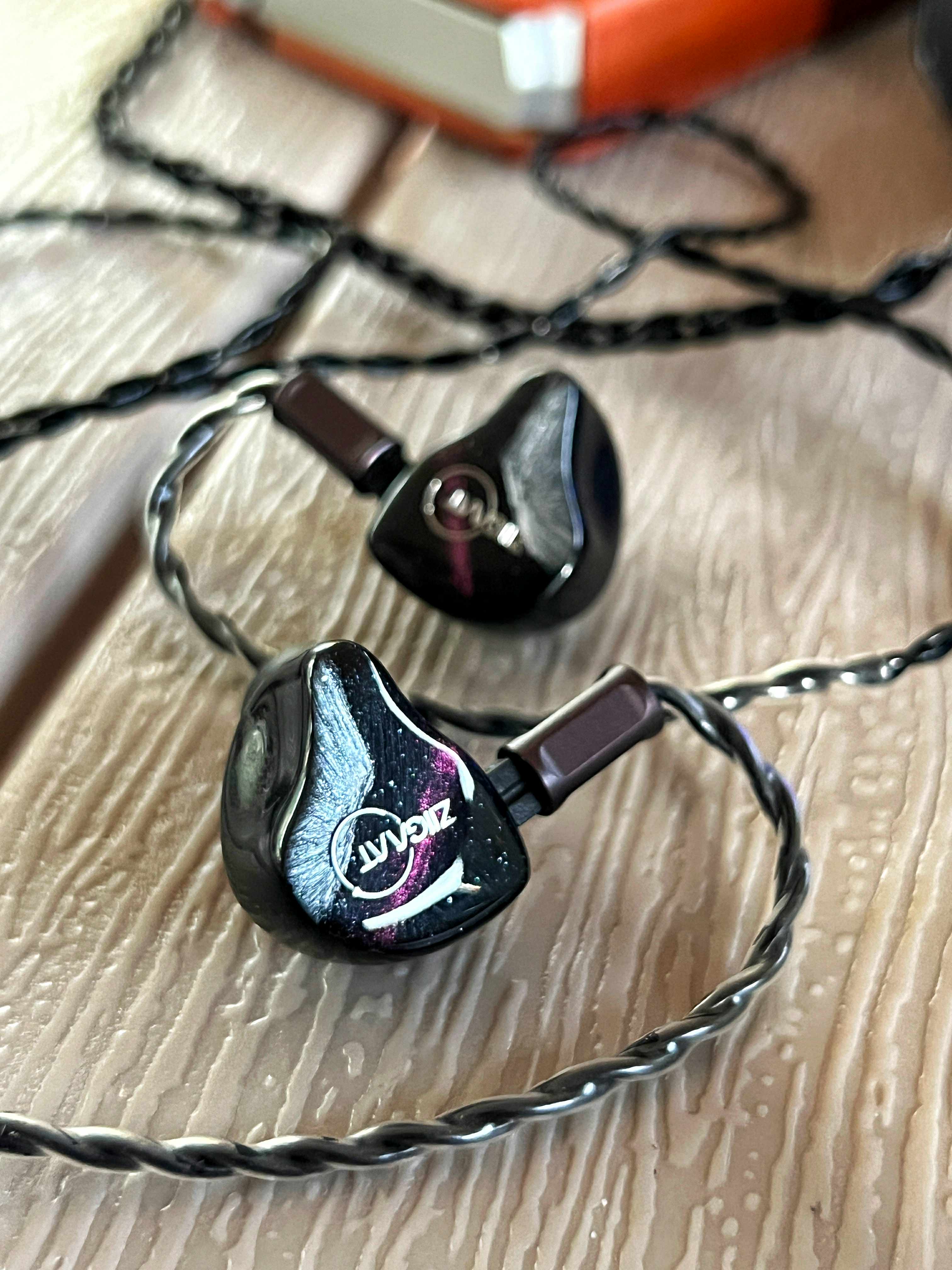
Final Thoughts
The Ziigaat Crescent feels like what happens when a brand actually understands how to make a hybrid work for music lovers not just for graphs. You get real sub-bass extension that reaches deep without getting boomy, a mid-bass that hits with both punch and texture, and a midrange that keeps instruments and vocals sounding natural and lifelike. The treble is smooth and extended, giving enough sparkle and air to keep things engaging, but never crossing into the harsh or fatiguing territory.
What makes it stand out is how it balances musicality with technical chops. Imaging is pinpoint, separation is clean, and micro-details come through without the sound feeling dissected. It’s got that “alive” presentation you want for casual listening, but it can also keep up if you’re the type to pick apart mixes. Add in its low-volume performance where the dynamics don’t collapse and that surprisingly premium carry case, and the Crescent becomes one of those rare sets I can highly recommend without hesitation.
Link: https://www.ziigaat.com/products/ziigaat-crescent






Driver setup:
1 × 10 mm LCP dynamic driver for sub-bass extension and control
1 × 10 mm PET dynamic driver for mid-bass warmth
1 × Knowles 30262-163 composite dual BA for upper mids and clarity
1 × Knowles 33518 dual BA tweeter for extended highs

Tuning Overview
The Crescent leans toward a musical, easy-to-enjoy presentation, but it’s not soft or dull. There’s a tasteful lift in the lows, enough to give bass notes real presence and slam without bleeding into the mids. The midrange itself is clean, open, and tonally natural, making vocals and instruments sound convincing and well-textured. Treble is refined and well-extended, adding air and openness without tipping into harshness or sibilance.
It’s not a cold, clinical set, but it still carries the kind of technical chops you’d expect from something more analytical. Layering is tight, imaging is precise, and transients have good definition, so you get detail retrieval without sacrificing the smooth, musical flow. It strikes a nice balance engaging enough for casual listening, but with enough resolution to reward critical sessions.
Bass
The Crescent’s low end is one of its most addictive traits. The sub-bass digs deep but it’s not a loose, one-note rumble. It’s controlled, with a texture you can almost feel, like the vibration of a bass amp cabinet in a small club. When a track calls for it, the Crescent lets that sub-bass bloom and fill the space, but the moment it’s done, it snaps back with precision so it never bleeds into the mids.
The mid-bass has just the right amount of punch to give drums a satisfying thump and bass guitars real body without smothering the rest of the mix. It’s not overcooked or sluggish—there’s a nice speed to it that keeps things tight and rhythmic. Kicks land with weight, basslines have definition, and electronic drops hit with enough authority to get your head nodding without shaking your fillings loose.
I tested it with some Ibiza mixes and Café del Mar chillout tracks, and the Crescent just locked into the groove effortlessly. The bass breathes—it doesn’t just hit and disappear. It swells and recedes naturally, giving the music a sense of flow. That’s probably why it works so well for both the laid-back warmth of downtempo and the high-energy punch of club tracks. It’s engaging without being fatiguing, and it’s the kind of tuning that makes you want to keep listening just to see what it does next.
Midrange
The Crescent’s mids have this inviting, organic quality that’s hard to fake. They sit in that sweet spot where vocals sound full and present without feeling like they’re shouting at you. Male vocals carry a nice chesty weight, giving singers like Leonard Cohen or Gregory Porter that grounded, resonant presence they deserve. Female vocals, on the other hand, come through open and expressive, airy when they need to be, but never thin or brittle.
Instruments keep their natural tone, which is huge for me. Acoustic guitars sound like wood and strings, not plastic and wire. Pianos carry that gentle percussive attack followed by a warm, blooming sustain. Even horns have a brassy bite without turning harsh. There’s enough resolution here to pick out subtle things like the breath before a vocal line or the slide of fingers on guitar strings but the Crescent doesn’t shove those details in your face. It just presents them naturally, like they’re part of the music, not an analytical checklist.
It’s also worth noting how cleanly the mids transition from the bass. That warmth from the low end flows upward, giving the mids body and weight, but it never gets muddy. This is what makes the Crescent so versatile you can go from lush ballads to busy rock mixes and it still feels composed and coherent.
Treble
This is where the Crescent quietly flexes. The upper mids and treble have just the right lift to add sparkle and air without crossing into sharp or fatiguing territory. Cymbals shimmer with a realistic decay, not that brittle “tin can” effect some IEMs give you. Strings have just enough bite to cut through a mix, but they never screech.
The treble tuning is smooth and controlled, yet it still manages to keep things lively. There’s a touch of crispness that adds definition to percussion and articulation to vocals, helping consonants sound clean without going sibilant. High-frequency instruments like chimes, bells, or high synth pads have clarity and separation, and they occupy their own space without crowding the stage.

Technical Performance
Imaging is precise, making it easy to pinpoint where each instrument sits, even when the mix gets dense. Whether it’s a jazz trio or a 20-piece orchestral recording, placement stays stable and believable. Separation is equally strong—elements don’t smear into each other, and you can follow individual layers without effort.
Detail retrieval is impressive, but it’s done tastefully. It doesn’t shove every micro detail in your face like some overly analytical sets; instead, it reveals them naturally. You’ll catch things like the reverb tail on a snare hit or the subtle texture of a bowed string, but it never distracts from the music itself.
Soundstage leans more on width than height, with a stable and centered image. There’s a good sense of depth too, enough to layer instruments front-to-back in a way that feels coherent. It’s not a giant, airy “concert hall” type of stage, but it’s spacious, organized, and immersive enough to keep you engaged for hours.
Dynamics are another strong point. Macro hits—big drum strikes, sudden drops—land with satisfying punch, while micro dynamics, like the gentle swell of a vocal phrase, come through with nuance. Transients are quick and clean, especially in the low end, thanks to that tight sub-bass control. Fast bass passages stay articulate, and the overall sense of speed helps keep complex tracks from sounding congested.



Source Pairing & Drivability
The Crescent is easy to drive and scales well with better gear. You don’t have to push the volume to get it to come alive, which is a big plus for late-night or long listening sessions. Even at low volumes, you still get bass slam, micro detail, and that dynamic energy—it doesn’t lose its soul when you turn it down.
Pair it with something like the FiiO QX13 and the synergy is spot-on. The QX13 adds fine detail and a touch of natural warmth that’s rare for an ESS-based DAC. There’s none of that “Sabre glare” or glassy treble edge; instead, you get smooth, extended highs and well-controlled bass. It’s a pairing that brings out the Crescent’s best qualities: deep, textured low end, lush and realistic mids, and treble that’s airy but never harsh. The result is a sound that’s both technically capable and genuinely musical, a balance that’s harder to nail than most people think.

Comparison – Against “Lush”
Putting the Crescent side-by-side with the Lush really shows how much more alive the Crescent feels. The Lush isn’t a bad set at all, but when you switch over, it can come across as a bit flat and reserved. The Crescent just has more drive and energy, it hits harder in the bass, separates instruments more cleanly, and has a treble that’s livelier and more engaging without losing control.
Bass slam is the first thing you notice. On the Crescent, kicks have more weight, basslines are more defined, and the sub-bass reach feels deeper and more textured. The Lush, by comparison, feels polite still present, but less impactful and not as tight.
Separation is another clear win for the Crescent. In busier tracks, it keeps individual elements distinct, so you can follow the bass groove without it getting tangled up with the mids. The Lush tends to smooth things together more, which can make the presentation feel softer but also less precise.
Treble is where the Crescent really pulls ahead. It’s got sparkle and air that make cymbals shimmer naturally and high notes breathe. The Lush is smoother up top, which some might prefer for super-long sessions, but it can also make the sound feel a bit closed-in. The Crescent manages to keep that natural tone while giving the upper end more life, which in turn makes the whole presentation feel more open and engaging.
In short, the Lush is laid-back and pleasant, but the Crescent has that extra bit of punch, clarity, and top-end sparkle that makes music feel more vivid and immediate.



Final Thoughts
The Ziigaat Crescent feels like what happens when a brand actually understands how to make a hybrid work for music lovers not just for graphs. You get real sub-bass extension that reaches deep without getting boomy, a mid-bass that hits with both punch and texture, and a midrange that keeps instruments and vocals sounding natural and lifelike. The treble is smooth and extended, giving enough sparkle and air to keep things engaging, but never crossing into the harsh or fatiguing territory.
What makes it stand out is how it balances musicality with technical chops. Imaging is pinpoint, separation is clean, and micro-details come through without the sound feeling dissected. It’s got that “alive” presentation you want for casual listening, but it can also keep up if you’re the type to pick apart mixes. Add in its low-volume performance where the dynamics don’t collapse and that surprisingly premium carry case, and the Crescent becomes one of those rare sets I can highly recommend without hesitation.
Link: https://www.ziigaat.com/products/ziigaat-crescent
- Get link
- X
- Other Apps
- Get link
- X
- Other Apps
Comments
Post a Comment